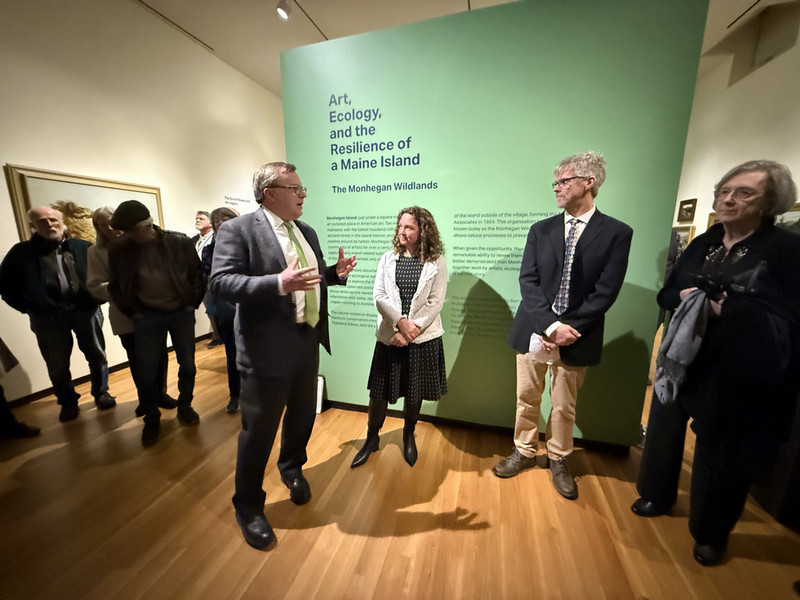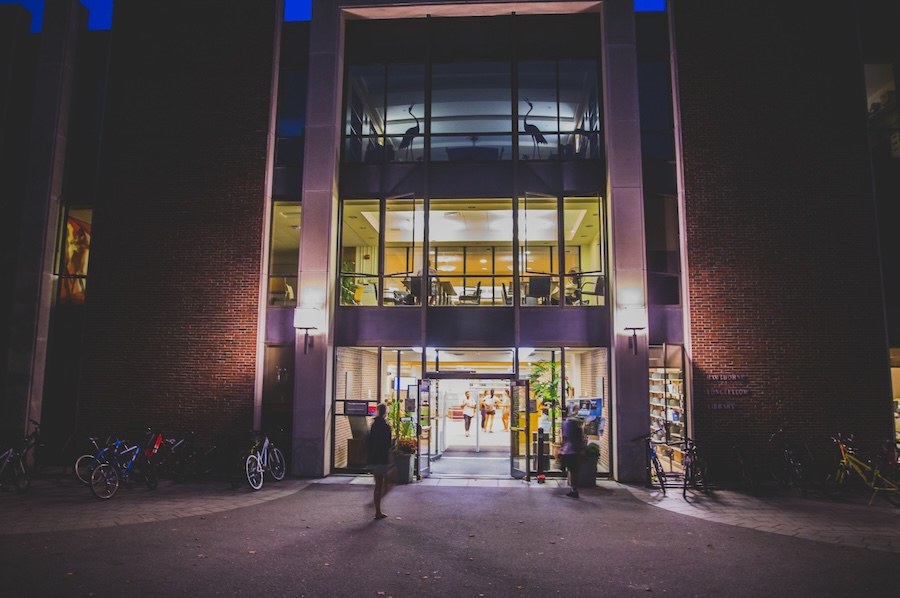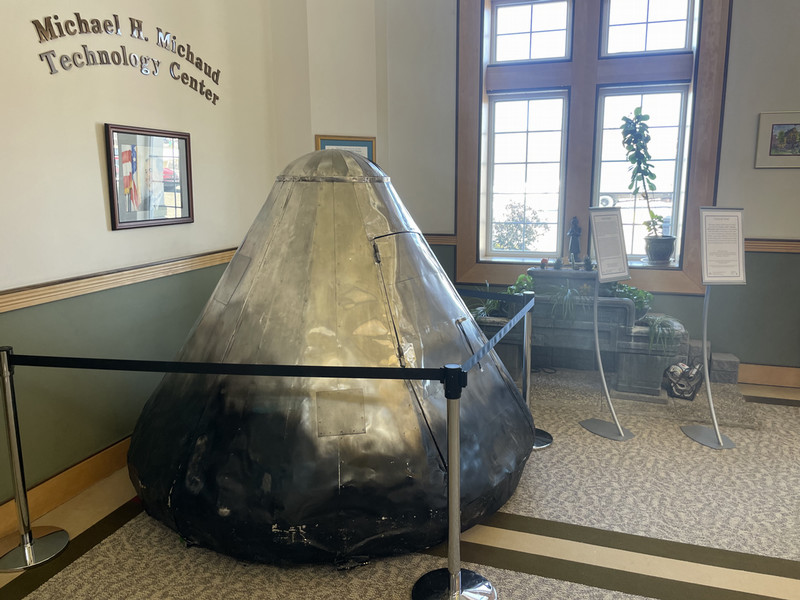Rare Ancient Portrait Acquired by Bowdoin College Museum of Art
By Bowdoin College Museum of ArtPortrait of a Youth with a Gilded Wreath That Once Covered a Mummy Now on View
The Bowdoin College Museum of Art recently added to its collections an Egyptian portrait created nearly 2,000 years ago.
Painted on a thin wooden panel, the portrait of a young man adorned with a gilded laurel wreath originally covered the face of a mummy.
The portrait was recently unveiled for Museum members and is now on view in the Rotunda of the Museum through June 5, 2016.
The newly acquired portrait dates from the second century CE when Egypt formed part of the Roman Empire, and is part of a body of work known as “Fayum Portraits,” named after the region of Egypt where they were first discovered in the nineteenth century.
Fewer than one thousand examples of Fayum portraits are known today.
While mummy portraits were common in Egypt since Pharaonic times, Bowdoin’s new acquisition contains elements of traditional Greek panel painting, such as three-quarter poses, realistic shadows, and highlights coming from a single source of light.
These elements suggest that the sitter was from a prosperous and diverse community close to the Nile River where Egyptians, Greeks, and Romans lived and interacted with each other, adopting and influencing one other’s art, culture and lifestyle.
“This portrait is a remarkable example of the cultural exchanges that occurred in the ancient world, and adds immeasurably to the Museum’s ability to represent the complexity of the ancient past,” said BCMA Co-director Frank Goodyear.
“We are proud to have acquired such a rare work of art from one of the earliest civilizations in recorded history,” BCMA Co-director Anne Goodyear said.
“This Fayum portrait further demonstrates the BCMA’s continued dedication to the collection and study of antiquities, and brings an important historic work to Maine.”
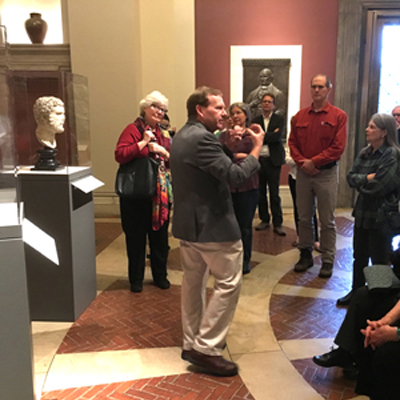
James Higginbotham, associate curator for the ancient collection, speaking with Museum of Art members at the unveiling of the Egyptian Mummy Portrait on May 5.
The portrait, which depicts the head and upper torso of a young male in his early teenage years, is an example of the ancient Egyptian burial ritual of painting a mummy with the face of the deceased to ensure they will be recognized in the afterlife.
It is uncertain whether this portrait represents the age when the individual died or looks back to an earlier moment in his life.
Current research suggests that these portraits may have been painted well before death and were meant for public or domestic display.
Upon death, and after the lengthy process preparing the body for the afterlife, the portrait was trimmed and placed over the head of the mummy.
The edges were then carefully secured in the wrapping with strips of linen leaving the face of the portrait exposed.
As a final touch, gold leaf was applied to frame the face and to create a wreath of leaves and flowers around the head.
The gold preserves the line where the linen wrappings stopped. The youth’s portrait was painted on a thin panel of wood in an encaustic technique using pigments blended in hot wax.
After a base coat of whitewash, the waxed-based colors, either molten, or emulsified with egg or oil, were applied with a brush while cooling wax could be shaped with a harder tool in a painstaking process highly prized in the Greco-Roman world.
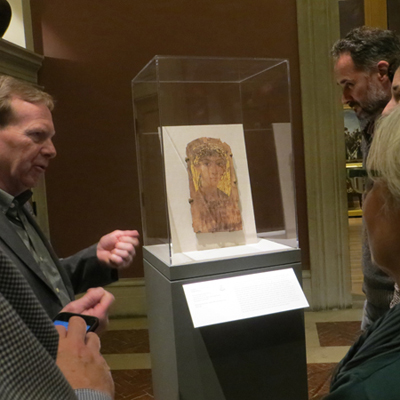
Despite what is known about the portrait, researchers at Bowdoin are beginning to delve into the origins of this portrait to better understand the techniques and materials used in its creation, and to examine the diverse cultural traditions that existed in ancient Egypt at the time of its creation.
Jim Higginbotham, associate curator for the ancient collections at BCMA, trusts that the portrait will inspire students across various disciplines at Bowdoin to engage with the ancient world in new ways.
“This portrait not only illustrates a bridge between cultures—Egyptian, Greek, and Roman—but also helps to link disciplines across campus,” said Higginbotham.
“Students and faculty from Archaeology, Art History, Anthropology, Visual Art Earth and Oceanographic Science, and Biology will all contribute to a thorough understanding of this extraordinary work of art.”
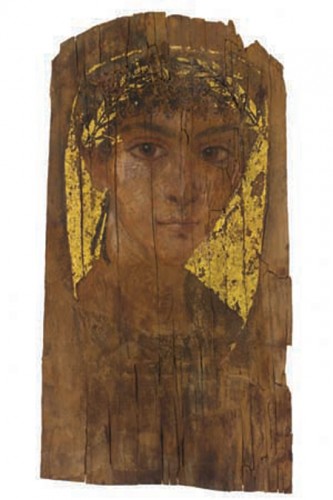 “Fayum Mummy Portrait Mask,” Egyptian, ca. second century CE, painted on wood with applied gilt leaf. Bowdoin College Museum of Art.
“Fayum Mummy Portrait Mask,” Egyptian, ca. second century CE, painted on wood with applied gilt leaf. Bowdoin College Museum of Art.The Boston Globe‘s Sebastian Smee calls the acquisition of the Fayum Mummy Portrait Mask “a coup for Bowdoin, the only museum in Maine with a nationally esteemed and extensive collection of ancient art.”

